A Guided Tour in the City of London
A mixture of old and new architecture
As I was travelling to London alone this spring, I enjoyed taking part in guided walks. One was about Christopher Wren’s churches, and the other was about architecture and history of the City of London in the same area around St. Paul’s Cathedral. The way this square mile is governed is far beyond my understanding. The link above explains it.
The area around St Paul’s Cathedral was heavily bombed by the Germans during the London Blitz. Luckily the cathedral was saved by the ever-vigilant firefighters who risked their lives running up high on the dome to extinguish the fires. The architect Sir Christopher Wren built the church after the great London fire in 1666 together with other churches close by.
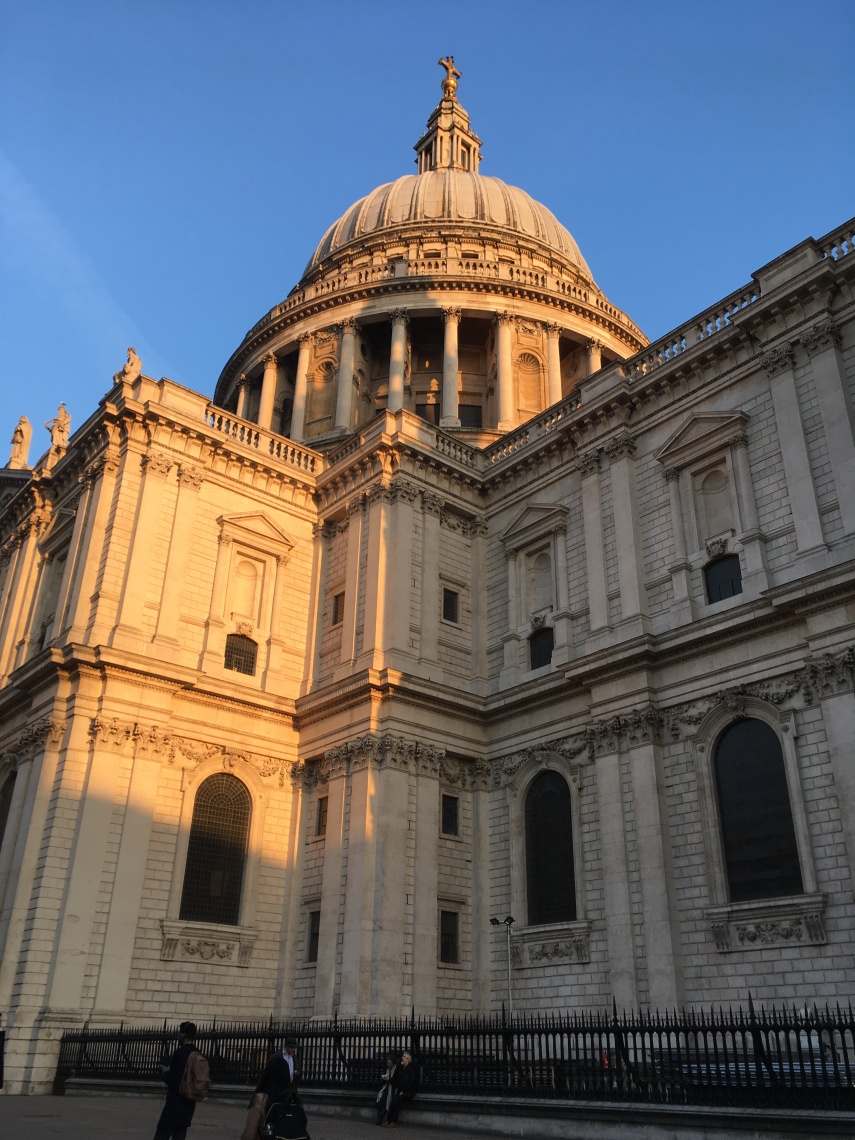
An angle of St Paul’s Cathedral in London
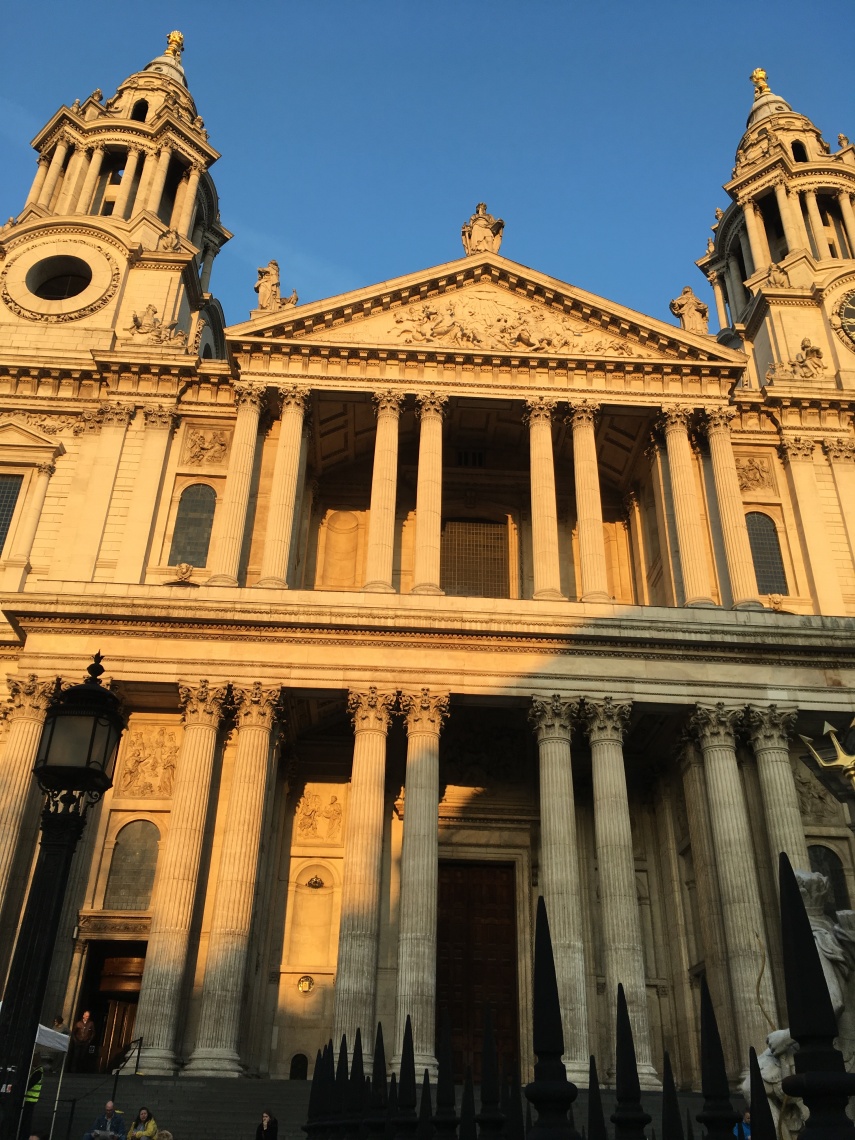
The front of St Paul’s Cathedral in London
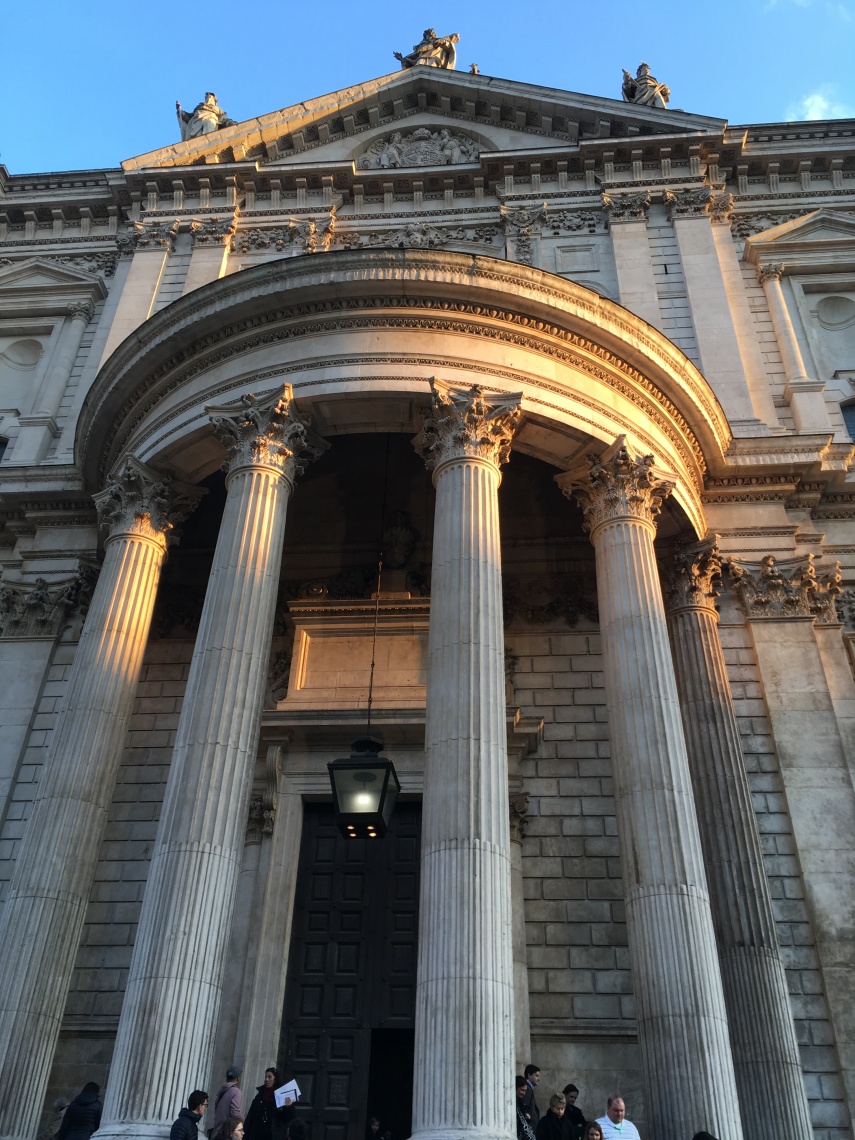
Detail from St Paul’s Cathedral
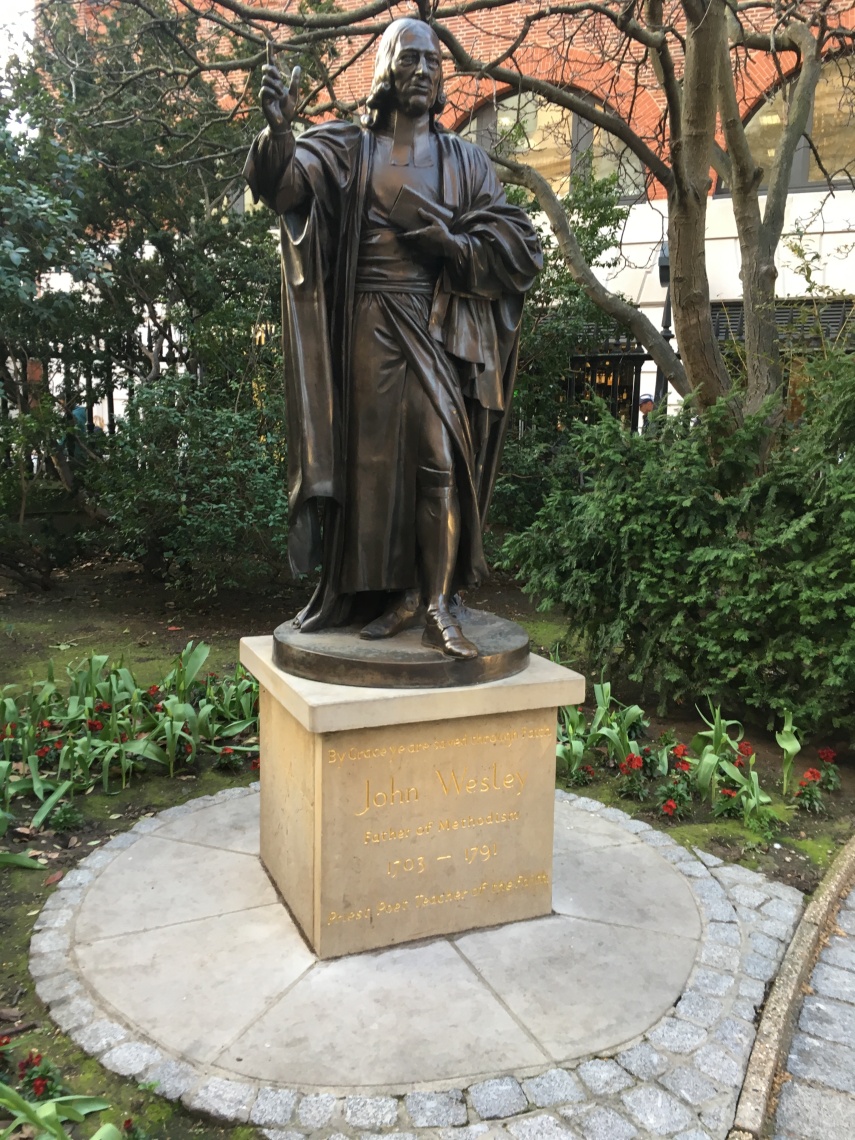
Statue of John Wesley in the churchyard of St Paul’s Cathedral. Father of Methodism 1703-1791
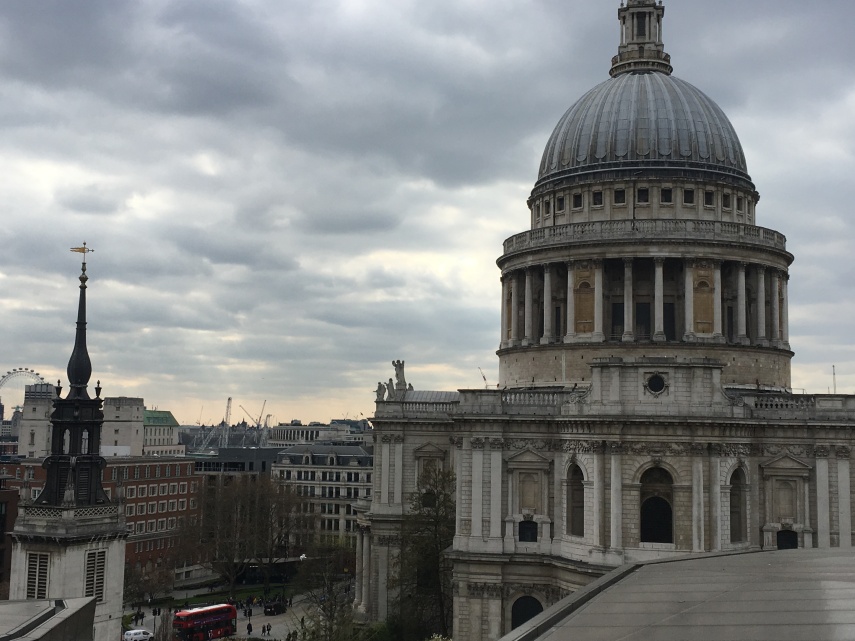
The city of London and St Paul’s Cathedral seen from the terrace roof of a new shopping mall “One New Change” by Nouvel
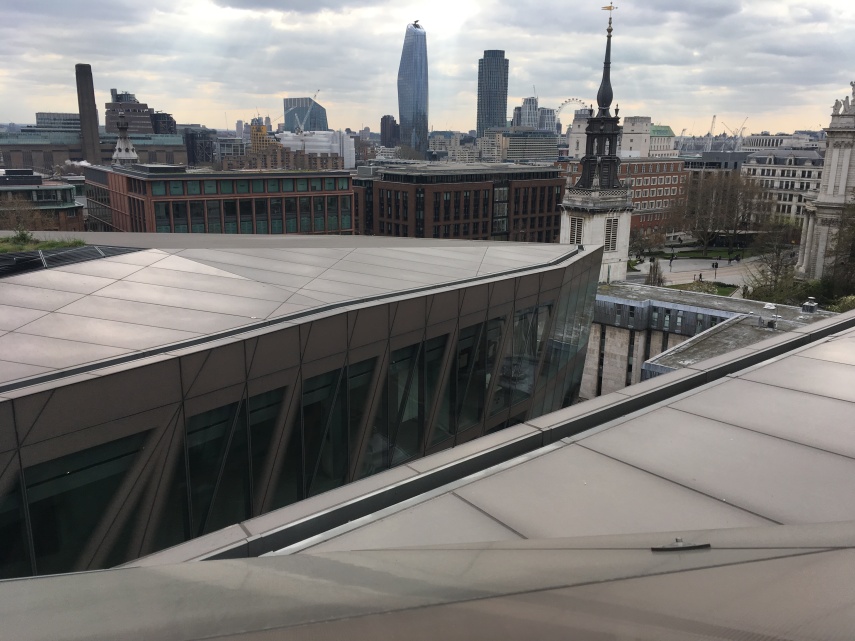
City of London seen from the roof of a new shopping mall “One New Change” by Jean Nouvel
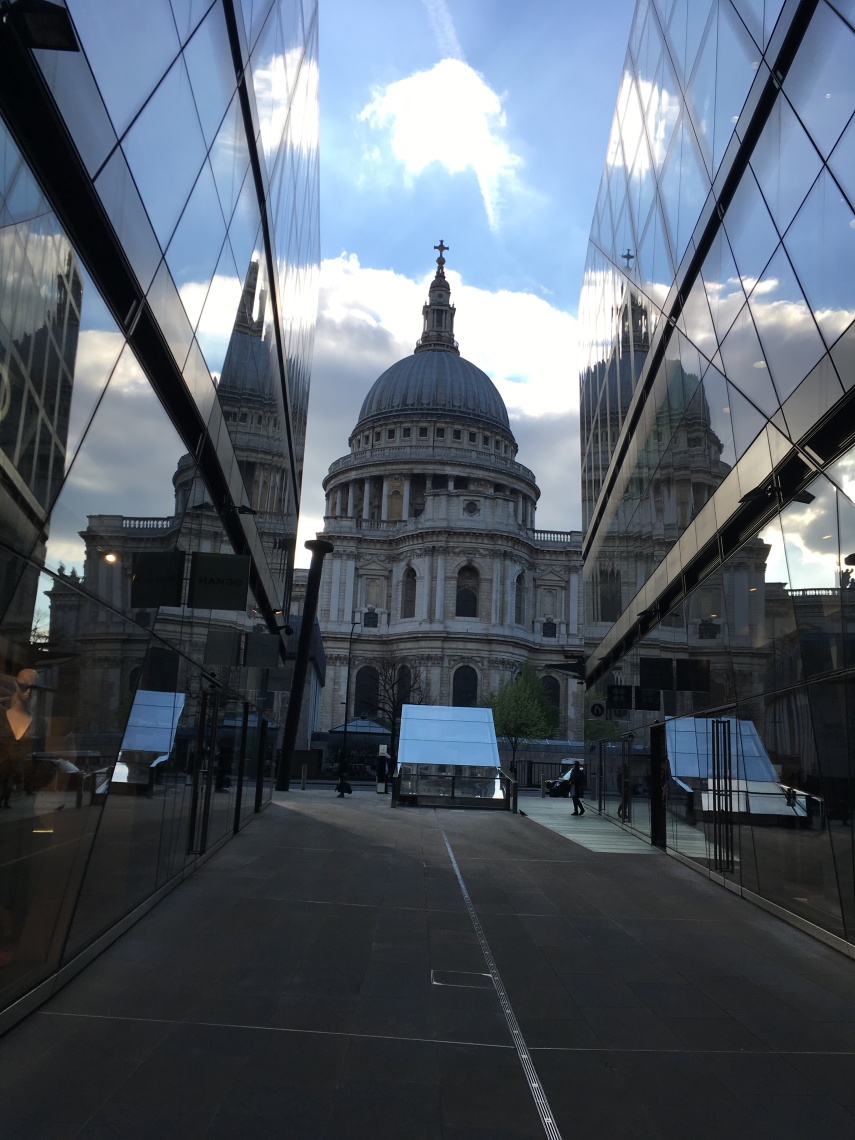
St Paul’s Cathedral seen from Jean Nouvel’s new shopping centre
Some are left as ruins or parks, and others are places to work and get a cup of coffee. If you like, see my mother’s pictures from 1946.
St Stephen Walbrook, an Anglican Parish Church

St Stephen Walbrook created by Cristopher Wren
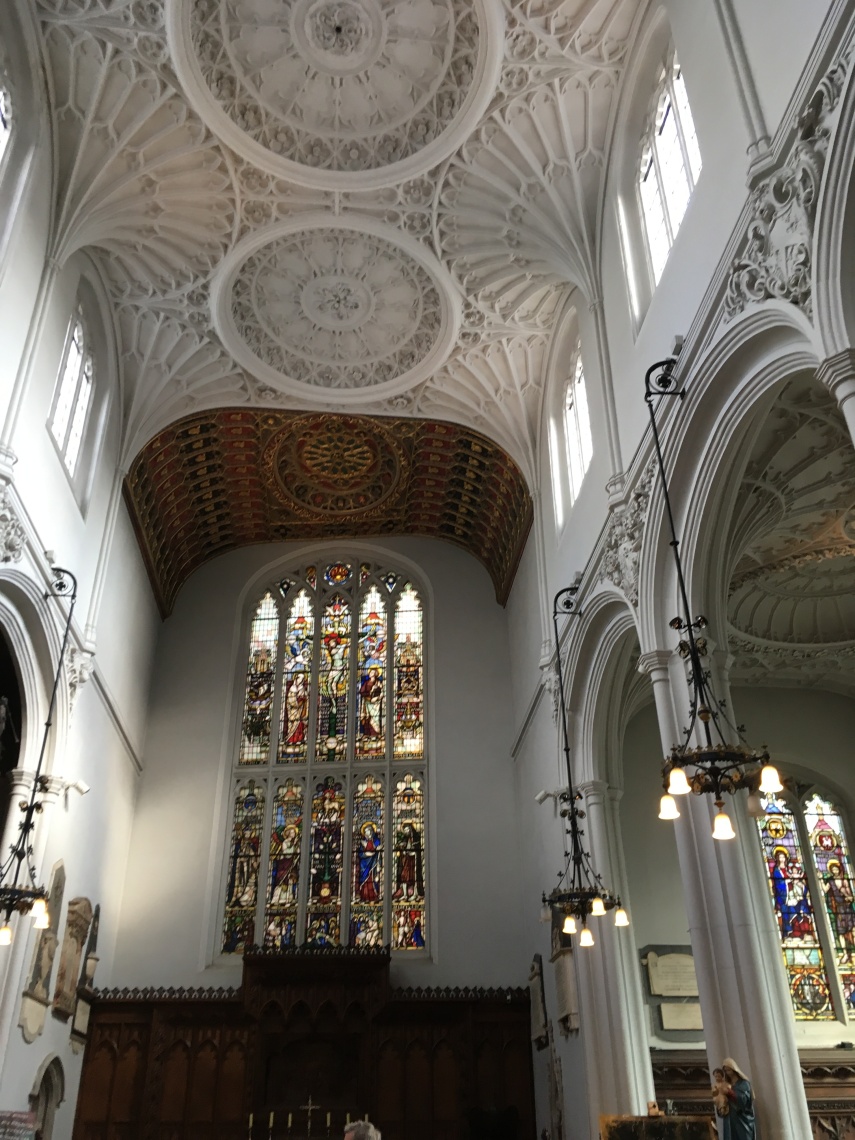
St Stephen Walbrook, a Christopher Wren church from 1672. The former church was destroyed by the great fire.
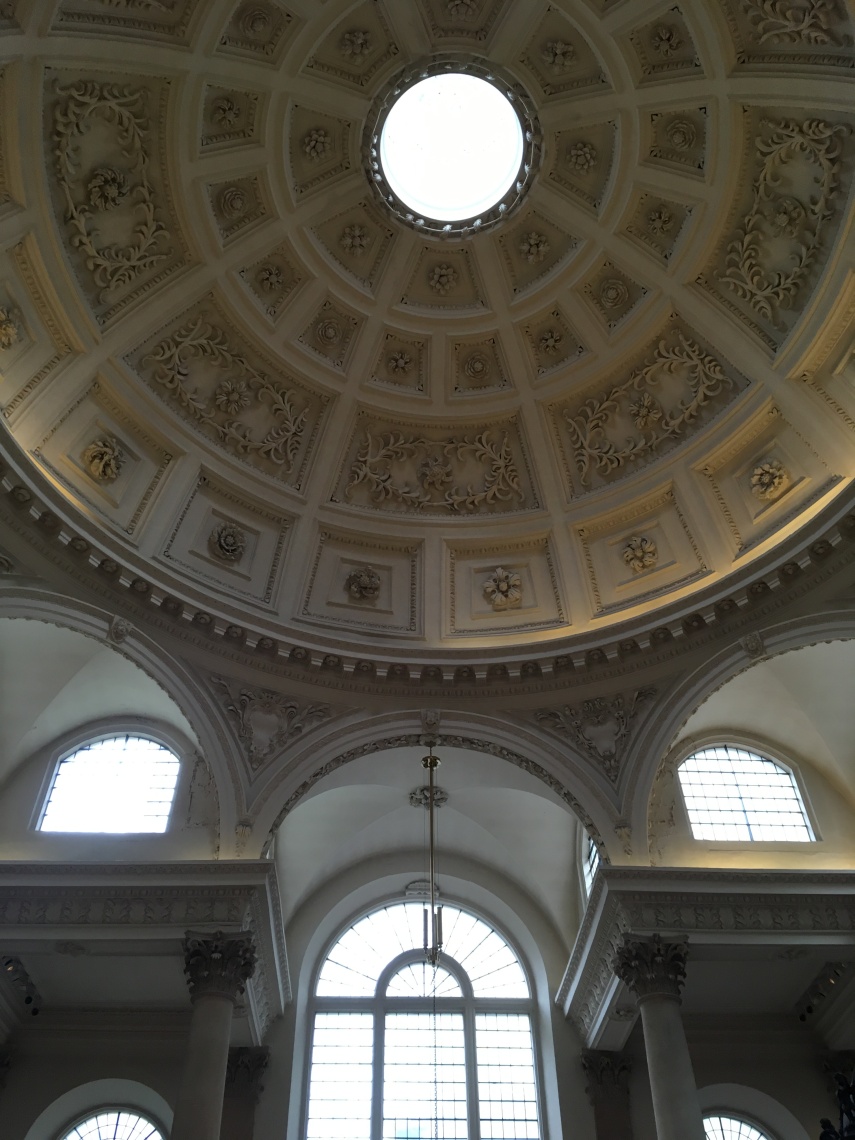
The dome of St Stephen Walbrook created by Cristopher Wren

The Cafe at St Stephen Walbrook by Cristopher Wren
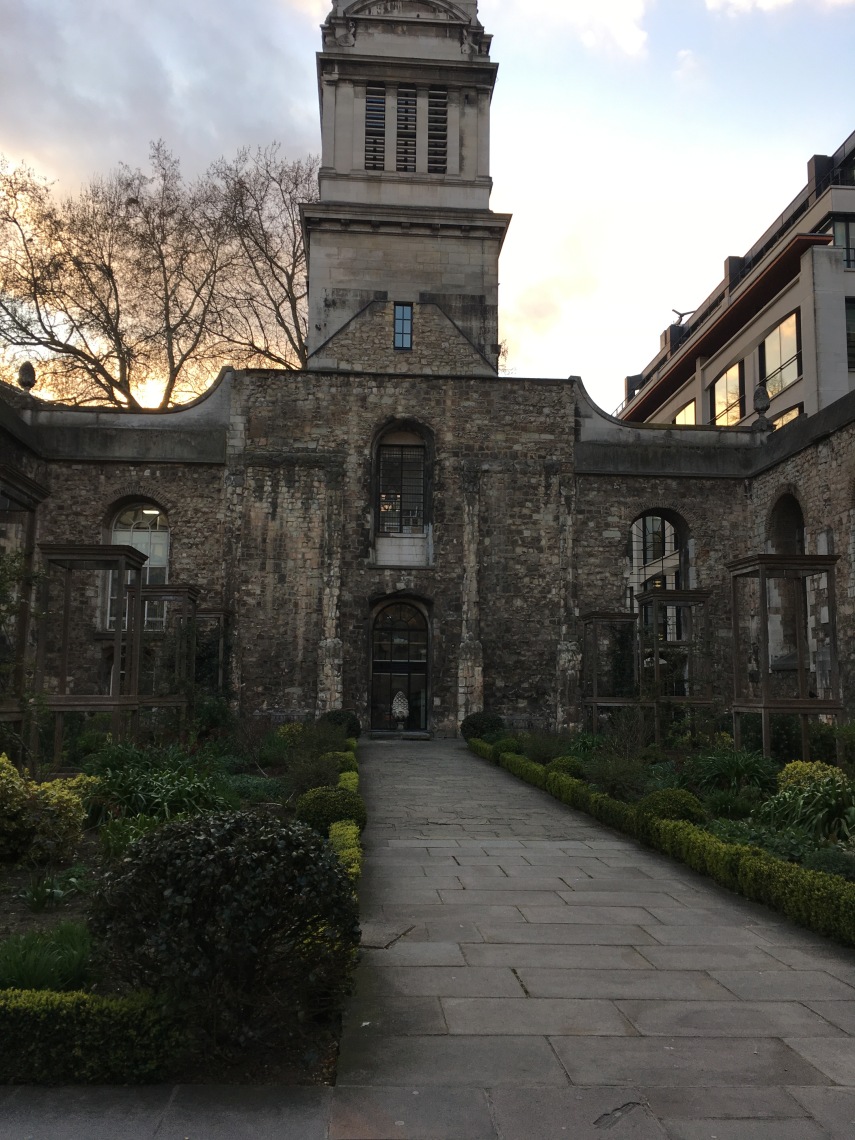
Only the tower is left from Christopher Wrens’s Christ Church Greyfriars. The site is made into a park.
From Wikipedia
Christ Church Greyfriars, also known as Christ Church Newgate Street, was a church in Newgate Street, opposite St Paul’s Cathedral in the City of London. Established as a monastic church in the thirteenth century, it became a parish church after the Dissolution of the Monasteries. Following its destruction in the Great Fire of London of 1666, it was rebuilt to the designs of Sir Christopher Wren. Except for the tower, the church was largely destroyed by bombing during the Second World War. The ruins are now a public garden.
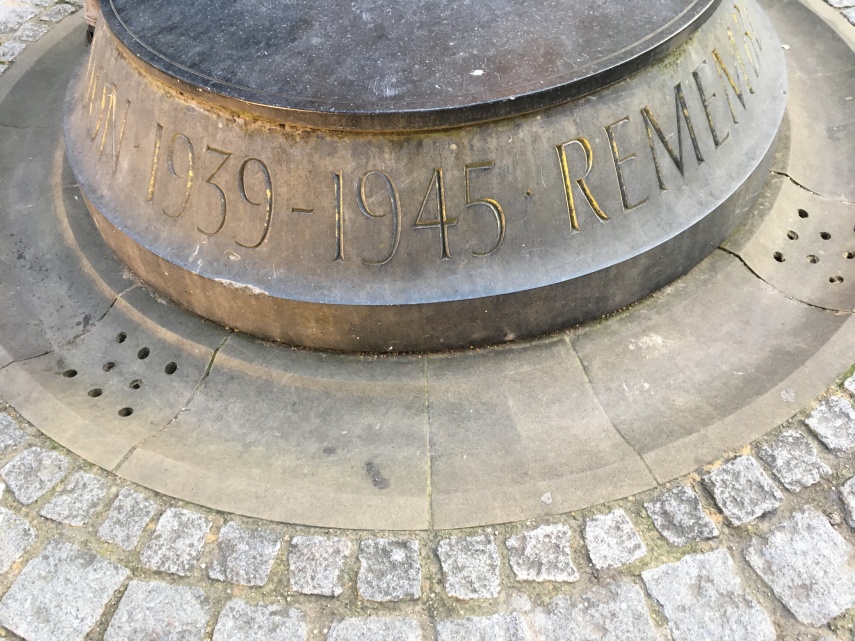
A memorial from WWII at St. Paul’s Cathedral
In the 1950s ugly new concrete buildings emerged from the bombed areas but are now nearly exchanged with modern buildings that seem to match better in the style of the old city of London.
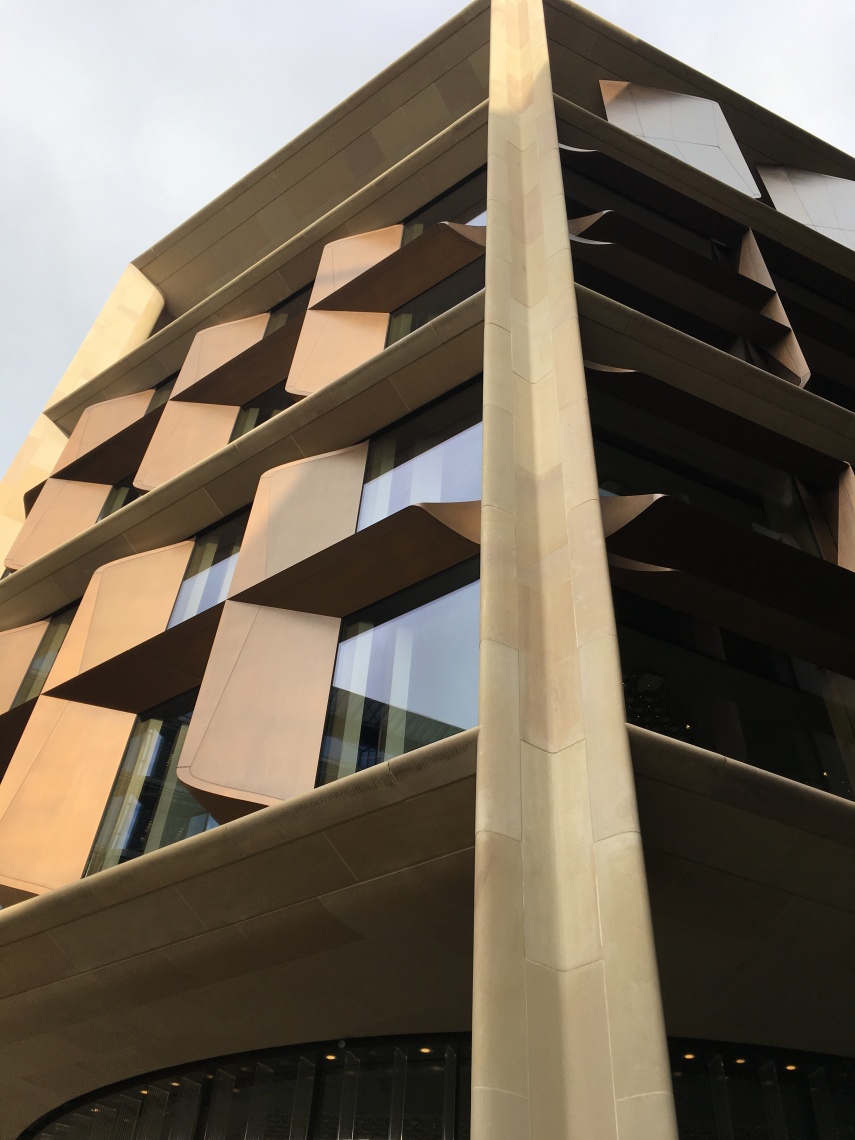
Bloomberg Building: “Workplace of the future, honouring the past.”

Bloomberg Building: “Workplace of the future, honouring the past.”
In the next post, I would like to share other pictures from the area.
Categories: Architecture, Historical issues, London, Travelling
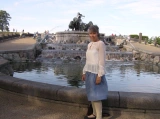

Old architecture always screams history to me!
LikeLiked by 1 person
So true. The Christopher Wren churches are so beautiful. Sad that some of them got destroyed during the Blitz
LikeLiked by 1 person
I did look at your mother’s photos. It amazes me, the difference sand-blasters make in cleaning pollution off a building, though can take its toll on the structure itself. Thank you for these. I visited London briefly while attending a seminar at Oxford but only the LSE and British Museum, nothing else.
LikeLiked by 1 person
Thank you for viewing my posts. Yes the old buildings were black then and when I visited first time in 1966. Not like the lovely cream coloured Portland stone we now see
LikeLiked by 1 person
Fantastic pics!!! I’m heading back to London in January and these pics have made me very excited! 🙂
LikeLiked by 1 person
I am so pleased to hear that
LikeLiked by 1 person
Thinking of your upcoming London trip, I am making new posts on locations I love to see again and again in London
LikeLiked by 1 person
Sweet!!! 🙂 Yeah some of those places are fun to go back and see again for sure!
LikeLike
I first visited London in 1978. There was a saying among Australians that you either loved it with a passion, or felt the opposite. I was in the opposite camp at first. Such greyness. Then, as I lived there and became more familiar, and the stonework was sandblasted, my opinion changed. But all these years later, as a “new” tourist, I would have to go through the process again.
I loved your mother’s photos (and so little traffic). Contrasted with your recent ones, it demonstrates how these major cities are in constant change for any number of reasons, fire and bombing being extreme causes.
LikeLiked by 1 person
I understand what you mean. In the 1970s the buildings were still black from air pollution, and the post-war building style was ugly. We could have met there in 1978 at the National Gallery. There is a bench in one of the galleries that are three connected benched or a round one. I sat there and realised that young people from all over the world sat on it at the same time
LikeLiked by 1 person
Quite possibly. Taking a long trip to England and Europe was a rite of passage for many young Australians. My original visa was five years, but Margaret Thatcher’s policies curtailed that.
I arrived around 1st April 1978, spending some weeks in Kent and travelling frequently to London, often stopping overnight. I distinctly remember one of my favourite things was a walk in Epping Forest, finishing off with a refreshing drink in a nearby pub. Of course, I did all the “regular” tourist things too.
Then I took off on a six week coach / camping tour to USSR and other countries “behind the iron curtain”. Our route from London took us to Holland, Denmark, Norway, Sweden, and Finland, where we crossed into what was then, Leningrad.
Until my return to Australia at the end of 1981, I lived in London and other parts of England whenever I was not on the continent.
I still miss the easy access to different countries, culture, cuisine and language. Turns out I had a bent for them!
LikeLiked by 1 person
Thank you for your detailed description of this long journey from your youth. Could become many blog posts. I am sure you learnt a lot from the experience
LikeLiked by 1 person